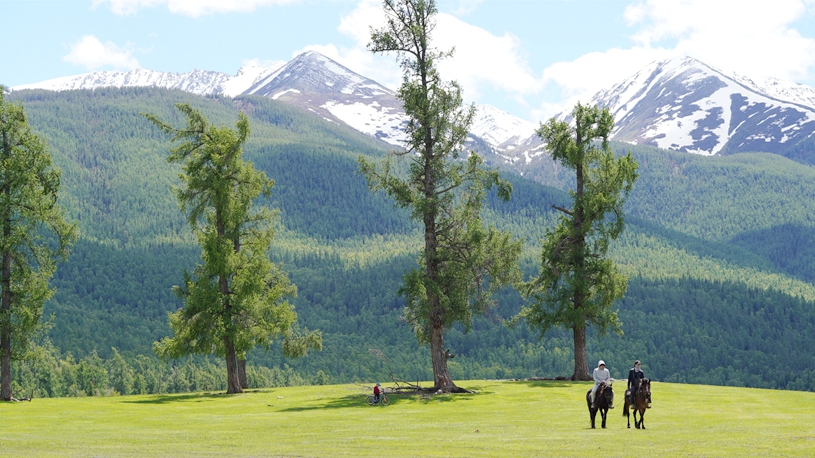LANZHOU, June 8 (Xinhua) -- Over the past few days, envoys from more than 20 countries immersed themselves in the unique cultural spectacles of the Hexi Corridor, a part of the ancient Silk Road, during a visit to northwest China's Gansu Province.
A delegation of ambassadors and senior diplomats from countries such as Madagascar, Jordan, Nepal and Slovakia began their visit on Wednesday in Lanzhou, the provincial capital, and traveled on Thursday to Dunhuang, a major stop on the ancient Silk Road.
Stretching over a distance of nearly 1,000 kilometers in Gansu, the Hexi Corridor is home to five UNESCO World Heritage Sites and 53 grottoes.
"I cherish the opportunity to visit the region very much. It allows me to appreciate the beautiful scenery and unique customs of the Hexi Corridor, especially Dunhuang," said Hussam Al Husseini, Jordanian Ambassador to China.
At an event promoting the corridor, Sinisa Berjan, Ambassador of Bosnia and Herzegovina to China, gave a thumbs up after tasting the wine produced in Jiayuguan, a city along the corridor.
Noting that Bosnia and Herzegovina is also a wine producing country, Berjan expressed optimism to promote cooperation between the two countries in the wine industry.
The envoys also showed strong interest in China's dryland agriculture and water-saving agriculture as they tried various fruits produced in Wuwei, another city on the corridor.
Thanks to sufficient sunlight and large temperature differences between day and night, fruits produced in the sandy fields via dryland agriculture along the corridor are exceptionally fragrant and sweet.
At the Mingsha Mountain and Crescent Spring scenic spot in Dunhuang, the envoys witnessed a tourism boom as camel caravans carried tourists through the desert and helicopters offered them a ride to view the oasis above the sand dunes.
"The desert scenery is very beautiful. The practice of using the desert landscapes to drive tourism development is worth learning from," said Hussam Al Husseini.
The Jordanian Ambassador said China has valuable expertise in revitalizing cultural and tourism resources. He hopes to promote exchanges and cooperation between the two countries in desert landscape development and desertification control.
On the nearby dunes, tourists dressed in traditional robes posed for photos, catching the attention of Berjan. Recently married, he and his wife intend to visit Dunhuang again to photograph a set of wedding photos in the desert.
"Wearing traditional Chinese costumes and taking wedding photos in the desert will be very meaningful," he said, adding that he and his wife have been intrigued by the Hexi Corridor desert scenery.
The distinctive culture of the corridor is best represented by the Mogao Grottoes, designated as a UNESCO World Heritage Site. Dating back to the 4th century, the site features 735 caves carved into a cliff, currently housing more than 2,000 colorful sculptures and 45,000 square meters of murals.
Seeing the murals depicting the exchange between Eastern and Western merchants, Nepal's Ambassador to China Bishnu Pukar Shrestha said, "From ancient times to the present, China has always maintained an open and inclusive attitude toward the world."
Many of the envoys have also been impressed by the efforts of the Chinese government to protect its cultural heritage.
He Xiaozu, head of the provincial department of culture and tourism of Gansu, expressed hope that through the visit of these envoys, more global attention will be drawn to Gansu, encouraging people worldwide to discover and explore the Hexi Corridor. ■











